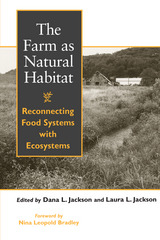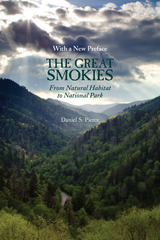
The Farm as Natural Habitat is a vital new contribution to the debate about agriculture and its impacts on the land. Arising from the conviction that the agricultural landscape as a whole could be restored to a healthy diversity, the book challenges the notion that the dominant agricultural landscape -- bereft of its original vegetation and wildlife and despoiled by chemical runoff -- is inevitable if we are to feed ourselves. Contributors bring together insights and practices from the fields of conservation biology, sustainable agriculture, and environmental restoration to link agriculture and biodiversity, farming and nature, in celebrating a unique alternative to conventional agriculture.
Rejecting the idea that "ecological sacrifice zones" are a necessary part of feeding a hungry world, the book offers compelling examples of an alternative agriculture that can produce not only healthful food, but fully functioning ecosystems and abundant populations of native species. Contributors include Collin Bode, George Boody, Brian DeVore, Arthur (Tex) Hawkins, Buddy Huffaker, Rhonda Janke, Richard Jefferson, Nick Jordan, Cheryl Miller, Heather Robertson, Carol Shennan, Judith Soule, Beth Waterhouse, and others.
The Farm as Natural Habitat is both hopeful and visionary, grounded in real examples, and guided by a commitment to healthy land and thriving communities. It is the first book to offer a viable approach to addressing the challenges of protecting and restoring biodiversity on private agricultural land and is essential reading for anyone concerned with issues of land or biodiversity conservation, farming and agriculture, ecological restoration, or the health of rural communities and landscapes.

The new preface chronicles developments in the park since the book’s original publication in 2000. Over the past decade and a half, the park has experienced a dramatic and improbable improvement in air quality, a variety of successful animal reintroduction programs—including, most spectacularly, elk—numerous improvements to trails and roads, and the ending of long-standing dispute over the “Road to Nowhere,” which had its origins in the founding of the park eight decades ago. Pierce also points out new challenges that have emerged in the park—and there is none more dangerous than the invasive species known as the wooly adelgid, which threatens to annihilate the park’s 800 acres of old-growth hemlocks. The recent history of the Great Smoky Mountains National Park provides ample proof of Pierce’s conclusion: “just as people have the power to set aside places as wonderful as the Cataloochee Valley and the Great Smoky Mountains National Park, they also have the power to destroy it.”
Daniel S. Pierce is professor of history at the University of North Carolina, Asheville. He is the author of Real NASCAR: White Lightning, Red Clay, and Big Bill France, and Corn from a Jar: Moonshining in the Great Smoky Mountains.
READERS
Browse our collection.
PUBLISHERS
See BiblioVault's publisher services.
STUDENT SERVICES
Files for college accessibility offices.
UChicago Accessibility Resources
home | accessibility | search | about | contact us
BiblioVault ® 2001 - 2024
The University of Chicago Press









